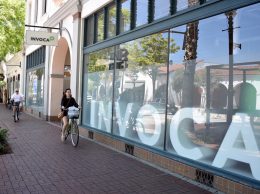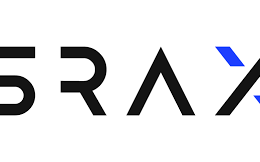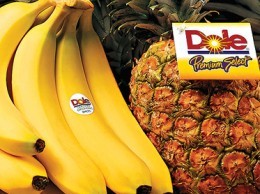Scan this, track that: Westlake firm helps institutions monitor assets
IN THIS ARTICLE
- Technology Topic
- Tom Bronzini Author
By Tom Bronzini Friday, May 27th, 2011
When CSU Channel Islands decided to automate how it keeps track of its laptops, PCs and other equipment a few years ago, it turned to Bar Scan, a Westlake Village-based company that has found a profitable niche worldwide in selling software programs for managing assets with bar codes.
Those patterns of vertical lines are familiar on grocery products and on tags at department stores. Bar codes speed us through the checkout process, and they are also useful in helping companies and public agencies keep track of their equipment for inventories, maintenance, insurance and accounting.
Andy Schiffer, president of Bar Scan, said the company averages between $600,000 and $1 million a year in gross annual revenues serving customers as varied as the Internal Revenue Service, school districts, colleges, and companies including the Walt Disney Co., Raytheon and Universal Studios.
Bar Scan has designed and refined software that is adaptable to a wide range of customers and works with hand-held scanning devices available from several manufacturers. The main software program resides in a server owned by the customer, Schiffer said. A database, for example, of all of the customer’s computer equipment and information about it is loaded into one or more of the hand-held scanners.
Small bar code stickers are applied to the equipment or in some cases to the door hinges of rooms, and this becomes part of the database.
Employees can then perform an inventory by scanning the bar code, and the hand-held device will tell them when the equipment was last inventoried, where it is supposed to be and who the user is, Schiffer said.
The employee can then update that data and send it back to the server. If the bar code is on a room’s door hinge, the data could include all the furniture and equipment in that room, Schiffer said.
“We don’t do any custom programming. We’re not in that business,” he said. But the software allows users to quickly make changes in the information they collect and display, he said.
Beyond the software, Bar Scan furnishes the hand-held scanners made by companies such as Motorola, and offers training either on site or online. Customers can also hire the company to help it set up a database and perform inventories.
Rick Bowen, project manager for Bar Scan, said he recently helped CSU Los Angeles set up an inventory of its campus. Bowen said he created a database of 4,700 rooms, assigning department codes and noting what each room is used for. He attached bar code stickers to the hinges of doors.
Now the university has a basic campus database, and the next step will be to enter information on the assets in the rooms, Schiffer said.
Bowen and Schiffer recalled that one of their biggest projects was an inventory for Walt Disney Co., including its movie and television studios and its California theme park.
“One of our guys put a [bar code] tag inside the Matterhorn,” Bowen said. “There is a computer that controls the lighting for the ride.”
Another project was for the Department of Justice in Bogota, Colombia, installing bar codes on armor-plated vehicles that the U.S. supplied to the country for drug enforcement. “The U.S. government wants to make sure that those vehicles are being used for drug enforcement and not to chauffer the president,” Schiffer said.
Bar Scan’s business is split between the public and private sector, Schiffer said.
The company operates at the mid-level in a three-tier universe of providers, he explained. The most basic systems, he said, are offered online and help customers track up to 10,000 assets. Customers get a computer disc, a manual, a handheld device and get started on their own.
Bar Scan offers more service and more features, Schiffer said, and helps customers track between 10,000 and 100,000 assets. A basic system with the computer program, two hand-held devices and training costs about $10,000, Schiffer said.
At the next level, Schiffer said, systems cost $50,000 and up and are designed to track more than 100,000 assets. Consultants visit the companies, and software is tailored to meet some specific needs and interfaces.
Bar Scan owes its origins to a project Schiffer worked on while he was with a Marina del Rey industrial engineering company called Plan-Tech Associates in the 1980s. Plan-Tech, which has since discontinued operations, was
hired to do an inventory at the Hughes Helicopters plant in Culver City as it prepared to move operations to build the Apache helicopter to Mesa, Ariz.
“We used bar code equipment and that was all very, very new at that time,” Schiffer said. “This was in the very simple PC days and we built a database for that.”
His employer found the project interesting, Schiffer said, but it was not its main business. So he and some associates started Bar Scan in 1989 in Marina del Rey. The company moved to Westlake Village in 1996.
Bar Scan has four full-time employees and some part-time workers, Schiffer said. It also works through dealerships on the East Coast and in St. Louis that have their own staff.
Schiffer said Bar Scan has no competitors in the Tri-Counties, but it has rivals in other parts of the nation.
The Great Recession dealt a setback, but Bar Scan is seeing improvement, Schiffer said.
“I think in 2008 we went down about 20 to 25 percent in gross. I had to reduce our staff,” he said, and he moved the company’s offices to a smaller space. “But business is definitely up over the last year,” Schiffer said, mostly outside of California because of the many budget problems here at the state and local level.












